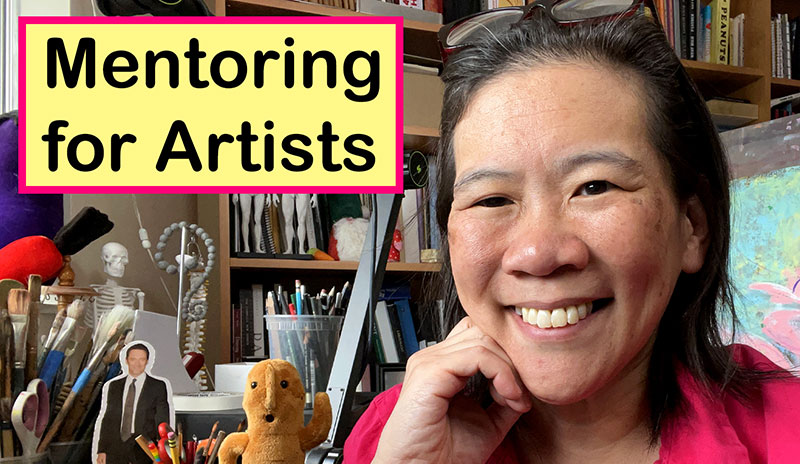Getting your art into a gallery can be challenging, how do your submit your artwork to a gallery, how do you get to the point where they ask you to exhibit with them?
- 1 min. short (connecting to a gallery)
- 1 min short (red flags)
- 1 min. short (don’t do this)
- 1 min. short (art to gallery wall)
- 1 min. short (socializing at galleries)
- 2 min. video (approaching a gallery)
- 49 min. video (discussion)

This video provides concrete tips using personal experiences with galleries to illustrate several strategies you can take. Discussion led by Art Prof Clara Lieu.

Video Walkthrough
- Unsolicited submissions to galleries don’t work, there is no application process. (exception is a juried exhibition which is not the same thing)
- The vast majority of the time, a connection with a gallery is made via an artist colleague.
- Don’t assume that because you’re friends with an artist who shows at a gallery that it’s a good idea to ask them to recommend you, it can get awkward!
- If you can, start by visiting and attending opening receptions at a local gallery, or one that is within reasonable driving distance.
- Get a feel for how an opening works at a gallery, you can start by just lurking, without the pressure of needing to speak to anyone.
- When you’re ready to start a conversation at an opening, ask the person about themselves, people love to talk about themselves.
- Most artists who approach galleries haven’t done their research on whether that gallery is a good fit for the type of art they make.
- Exhibiting with a gallery is more about finding a good fit and relationship than about how good your artwork is.
- Look at the roster of artists the gallery exhibits, and ask yourself whether you fit into the style and media of those artists.
- Use Instagram to research what types of galleries you may want to try to pursue relationships with.
- Follow a gallery’s Instagram to see what their current shows are, and whether you are a good fit for them.
- A gallery’s Instagram usually has more information compared to their website.
- Leave thoughtful comments on the gallery’s Instagram, those types of comments really stand out.
- Follow art critics, dealers, etc. who can give you insight into exhibitions in your area, or places you’d like to show.
- Look at who those art critics, dealers follow on Instagram to find other people and galleries to follow.
- Follow artists who have artwork that is similar to yours, and the types of careers you are striving for.
- Look at those artists’ curriculum vitaes and see what galleries they showed with at the beginning of their careers.

Prof Lieu’s Tips

To price your art, a good place to start is doing the math math in terms of 1) # hours spent making the work and 2) cost of materials.

You can ask yourself what is acceptable in terms of your time, so if you’d like to pay yourself $50 an hour. Or, if you want to make $100 per hour for your time, etc. Really depends on the person!
Let’s say one of your watercolor paintings takes 3 hours, and you want to be paid $50 an hour, that puts you at $150 + cost of materials.

I know this seems vague, but it works for me: I don’t want to price so low that I feel like I’m losing $ with the sale, but I don’t want to price so high that it makes me uncomfortable. Somewhere in between is what you’re looking to find.




